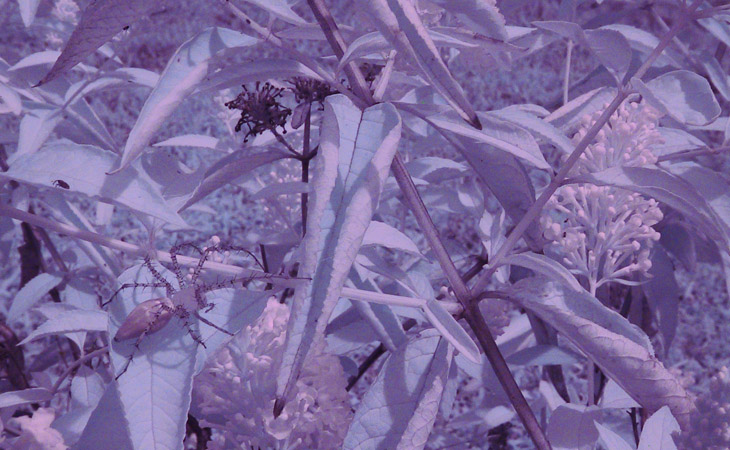
I was going to out this one in its own post, but it certainly makes an entry for Monday color that won’t be duplicated in hue anytime soon – or, well, maybe it will, if I dig out the old camera.
This is infrared; specifically, using a 720nm IR filter on an old Canon Pro90 digital camera that has no IR blocking filter of its own. Digital sensors are also sensitive to infrared light to a degree, which can make exposures a little squirrelly sometimes, so most cameras now have IR blocking filters permanently mounted over the sensor. To see something like this, you need a different filter, almost exactly the opposite in fact: it must block nearly all visible light but let infrared through. These aren’t hard to find, and the expense varies, but this one in particular allows IR that is just past ‘visible’ light (which we stop seeing as it passes 700nm or so,) while others are available that block up to 900nm or higher.
The photo was an experiment, to see if the green lynx spider (Peucetia viridans) visible to the left produced any curious effect in IR – essentially, the answer is, “no.” The different hues seen here are only slightly tweaked for contrast from the original image, just to reduce some of the monochrome effect. Foliage reflects IR to a large degree, some kinds more than others, while bark and the sky reflect very little and usually go quite dark. Since IR light is sparse, exposure times have to go long even on bright sunny days (which are pretty much a necessity anyway,) so I was lucky enough to have no wind and a placid subject for this shot. The setting, by the way, is a butterfly bush, Buddleia davidii.




















































